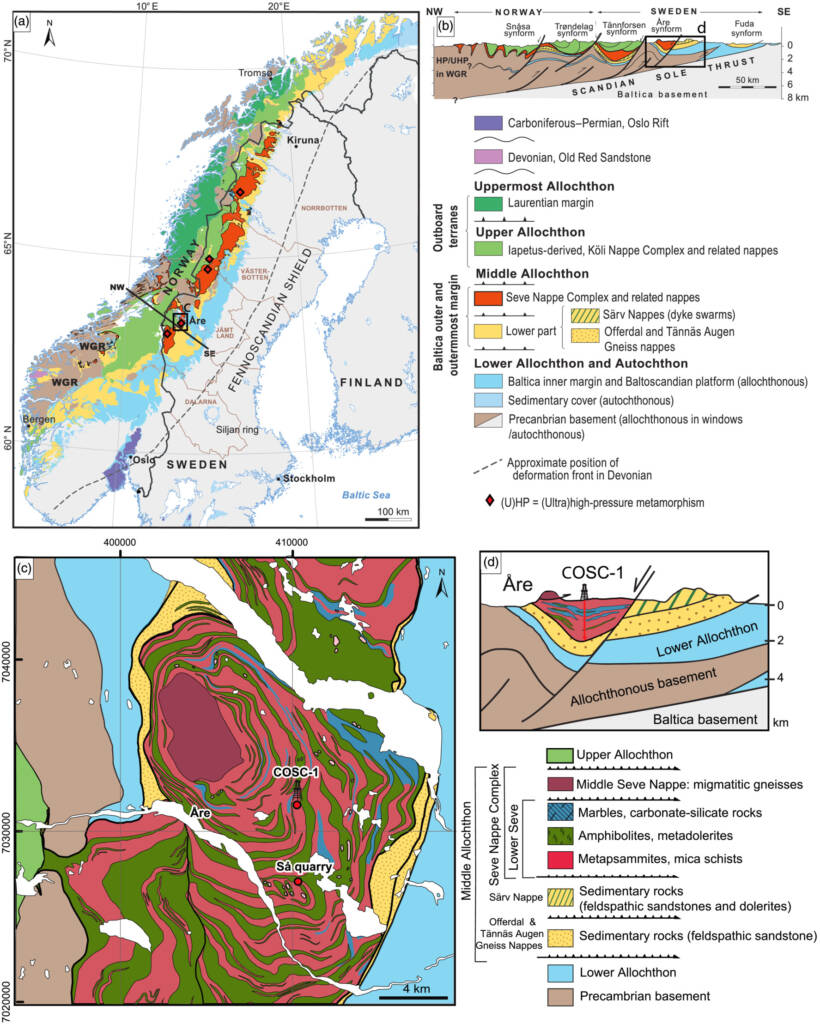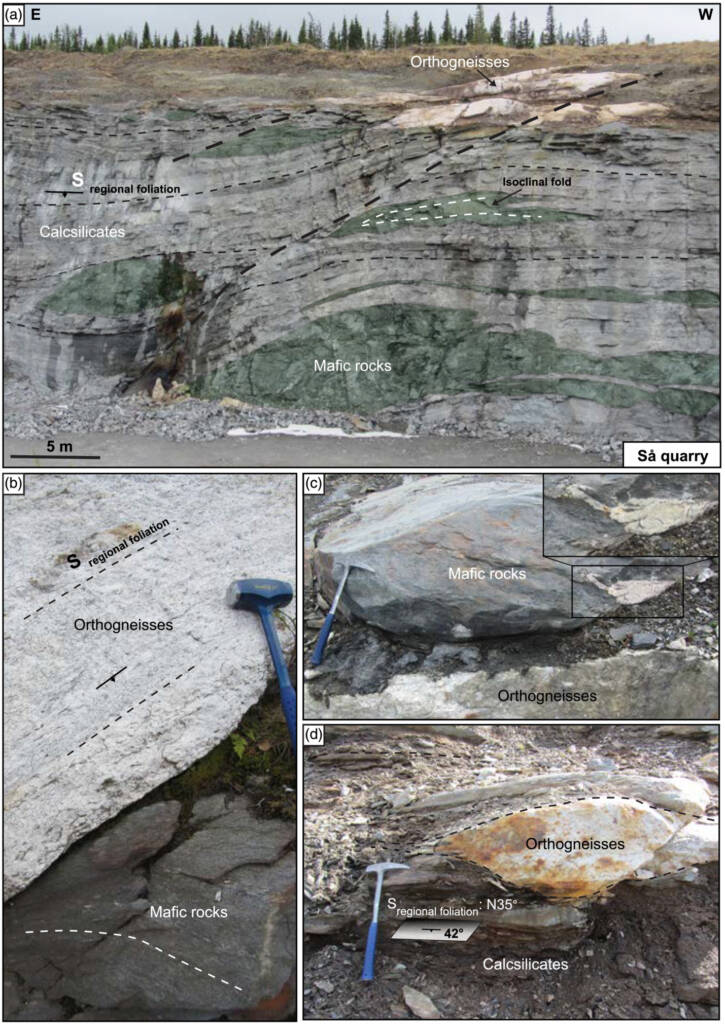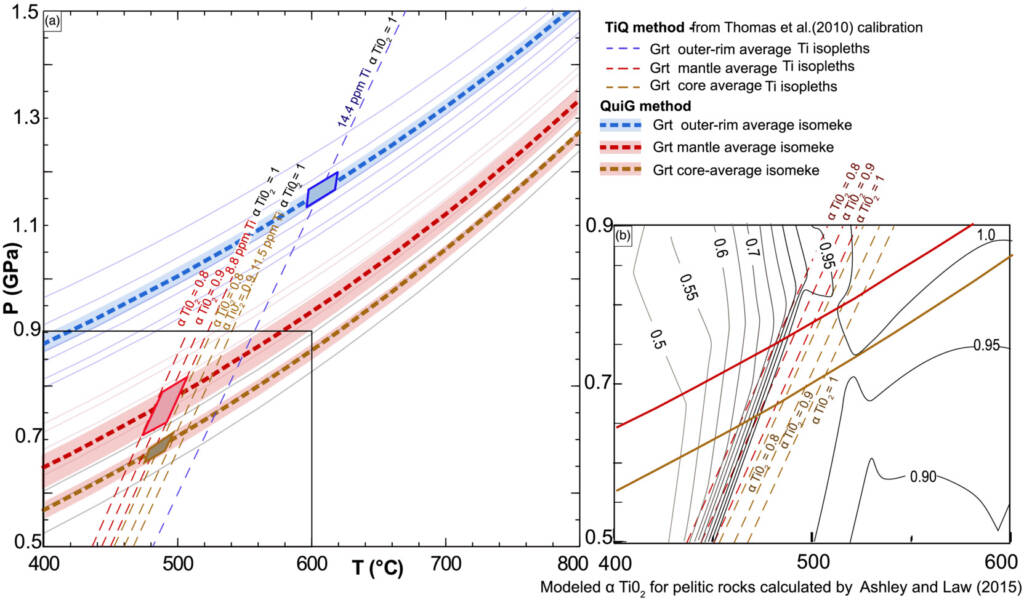Deciphering the tectonometamorphic history of subducted metapelites using quartz-in-garnet and Ti-in-quartz (QuiG–TiQ) geothermobarometry
In this paper, Pauline Jeanneret and co-authors characterized the tectonometamorphic evolution of the Lower Seve Nappe in the Scandinavian Caledonides with the help of the continuous Collisional Orogeny in the Scandinavian Caledonides (COSC-1) drill core, using a combination of various P–T estimation techniques based on garnet–quartz mineral pairs (quartz-in-garnet and Ti-in-quartz [QuiG–TiQ]), conventional thermobarometry and thermodynamic modelling of phase equilibria.

This multi-method approach yields complementary results and delivers critical data to constrain a comprehensive pressure–temperature–deformation–time (P–T–D–t) evolutionary path for the metasedimentary rocks of the Lower Seve Nappe. In the garnetiferous metasedimentary rocks, quartz inclusions in garnet preserve the P–T conditions of three distinct garnet growth stages corresponding to three metamorphic stages Ms1 to Ms3, including prograde and peak metamorphic conditions.

Collectively, these results are consistent with previous estimates of the timing and conditions of metamorphism derived from the Lower Seve Nappe especially in west-central Jämtland. However, application of QuiG–TiQ thermobarometry demonstrated that quartz inclusions in garnet can preserve different aspects of garnet growth, which are not accessible by traditional methods especially in complex terranes, and therefore provided new significant insights into the Lower Seve prograde evolution.

If your want to see more about this please go and download our paper on the Journal Of Metamorphic Geology webpage
